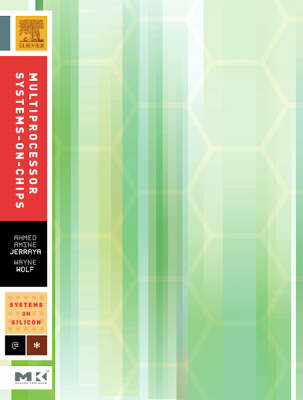Morgan Kaufmann Series in Systems on Silicon (Hardcover)
2 total works
Modern system-on-chip (SoC) design shows a clear trend toward integration of multiple processor cores on a single chip. Designing a multiprocessor system-on-chip (MPSOC) requires an understanding of the various design styles and techniques used in the multiprocessor. Understanding the application area of the MPSOC is also critical to making proper tradeoffs and design decisions.Multiprocessor Systems-on-Chips covers both design techniques and applications for MPSOCs. Design topics include multiprocessor architectures, processors, operating systems, compilers, methodologies, and synthesis algorithms, and application areas covered include telecommunications and multimedia. The majority of the chapters were collected from presentations made at the International Workshop on Application-Specific Multi-Processor SoC held over the past two years. The workshop assembled internationally recognized speakers on the range of topics relevant to MPSOCs. After having refined their material at the workshop, the speakers are now writing chapters and the editors are fashioning them into a unified book by making connections between chapters and developing common terminology.
Readings in Hardware/Software Co-Design
by Giovanni De Micheli, Rolf Ernst, and Wayne Wolf
Published 19 June 2001
Embedded system designers are constantly looking for new tools and techniques to help satisfy the exploding demand for consumer information appliances and specialized industrial products. One critical barrier to the timely release of embedded system products is integrating the design of the hardware and software systems. Hardware/software co-design is a set of methodologies and techniques specifically created to support the concurrent design of both systems, effectively reducing multiple iterations and major redesigns. In addition to its critical role in the development of embedded systems, many experts believe that co-design will be a key design methodology for Systems-on-a-Chip.
Readings in Hardware/Software Co-Design presents the papers that have shaped the hardware/software co-design field since its inception in the early 90s. Field experts -- Giovanni De Micheli, Rolf Ernst, and Wayne Wolf -- introduce sections of the book, and provide context for the paper that follow. This collection provides professionals, researchers and graduate students with a single reference source for this critical aspect of computing design.
Readings in Hardware/Software Co-Design presents the papers that have shaped the hardware/software co-design field since its inception in the early 90s. Field experts -- Giovanni De Micheli, Rolf Ernst, and Wayne Wolf -- introduce sections of the book, and provide context for the paper that follow. This collection provides professionals, researchers and graduate students with a single reference source for this critical aspect of computing design.

